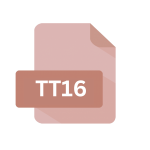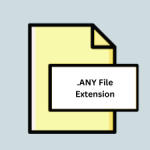.XPDL File Extension

XPDL Module
| Developer | Workflow Management Coalition |
| Popularity | |
| Category | Data Files |
| Format | .XPDL |
| Cross Platform | Update Soon |
What is an XPDL file?
.XPDL (XML Process Definition Language) is a file format used for describing business processes. It’s based on XML (eXtensible Markup Language) and serves as a standardized means of representing workflow and process management information. XPDL files contain information about process definitions, including tasks, transitions, participants, data, and more.
More Information.
XPDL was introduced in the early 2000s to address the need for a standardized format to define business processes. Its primary purpose is to facilitate interoperability between different BPM software systems, allowing for the exchange of process models without losing vital information.
Origin Of This File.
The XPDL file format originated from the Workflow Management Coalition (WfMC), a global organization focused on developing workflow and BPM (Business Process Management) standards.
File Structure Technical Specification.
XPDL files are structured using XML syntax, making them both human-readable and machine-readable. The structure typically includes elements for defining process activities, transitions, data objects, participants, and other relevant information. Detailed technical specifications can be found in the official documentation provided by the Workflow Management Coalition.
How to Convert the File?
Windows:
- Using BPM Software: Install BPM (Business Process Management) software on your Windows computer that supports XPDL file format. Most BPM tools offer import and export functionalities, allowing you to convert XPDL files to other formats supported by the software.
- Online Conversion Tools: Explore online BPM platforms or conversion tools that allow uploading XPDL files and converting them to other formats directly from your web browser.
Linux:
- BPM Software: Look for BPM software compatible with Linux distributions. Similar to Windows, these tools usually support XPDL files and offer conversion options.
- Command Line Tools: Some command-line tools might be available for converting XPDL files to other formats. You can search for Linux-based BPM conversion utilities that operate through the terminal.
macOS:
- BPM Software: Install BPM software designed for macOS that supports XPDL files. These applications typically include features for converting XPDL files to other formats.
- Online Conversion Services: Explore web-based BPM platforms or online conversion services accessible through your web browser on macOS.
Android:
- Web-Based BPM Platforms: Access web-based BPM platforms through your Android device’s browser. Some of these platforms offer conversion tools, allowing you to upload XPDL files and convert them to other formats directly on your mobile device.
- Third-Party Apps: Look for BPM apps available on the Google Play Store that support XPDL files and offer conversion functionalities.
iOS:
- BPM Apps: Install BPM applications from the App Store on your iOS device. These apps should support XPDL files and provide options for converting them to other formats.
- Browser-Based Solutions: Similar to Android, you can access web-based BPM platforms through the browser on your iOS device, which may offer conversion capabilities.
Others:
- Online Conversion Tools: Explore online BPM platforms or conversion services that are accessible from any operating system with a web browser. These platforms often support XPDL files and provide conversion options.
- Cross-Platform BPM Software: Look for BPM software solutions that are compatible with multiple operating systems, including Windows, Linux, macOS, Android, and iOS. These tools typically support XPDL files and offer conversion functionalities across different platforms.
Advantages And Disadvantages.
Advantages:
- Interoperability: XPDL enables the exchange of process models between different BPM systems, promoting interoperability.
- Standardization: Being a standardized format, XPDL ensures consistency and compatibility across various BPM software.
- Readability: XML-based structure makes XPDL files easy to read and understand by both humans and machines.
- Process Visualization: XPDL allows for visual representation of complex business processes, aiding in analysis and optimization.
Disadvantages:
- Limited Functionality: While XPDL serves its purpose for defining process models, it may lack support for advanced features offered by specific BPM platforms.
- Complexity: Working directly with XML-based XPDL files can be daunting for users unfamiliar with XML syntax.
- Versioning Issues: Compatibility issues may arise when exchanging XPDL files between systems using different versions of the format.
How to Open XPDL?
Open In Windows
XPDL files can be opened using compatible BPM software installed on Windows.
Open In Linux
Similarly, BPM software available for Linux systems can open XPDL files.
Open In MAC
BPM tools with macOS support can handle XPDL files on Mac computers.
Open In Android
While there might not be many native BPM applications for Android, some web-based BPM solutions can be accessed via browsers on Android devices.
Open In IOS
BPM software compatible with iOS can open XPDL files on iPhones and iPads.
Open in Others
XPDL files can also be opened using online BPM platforms or converted to other formats using specialized conversion tools. Additionally, some text editors with XML syntax highlighting can also display XPDL files effectively.













